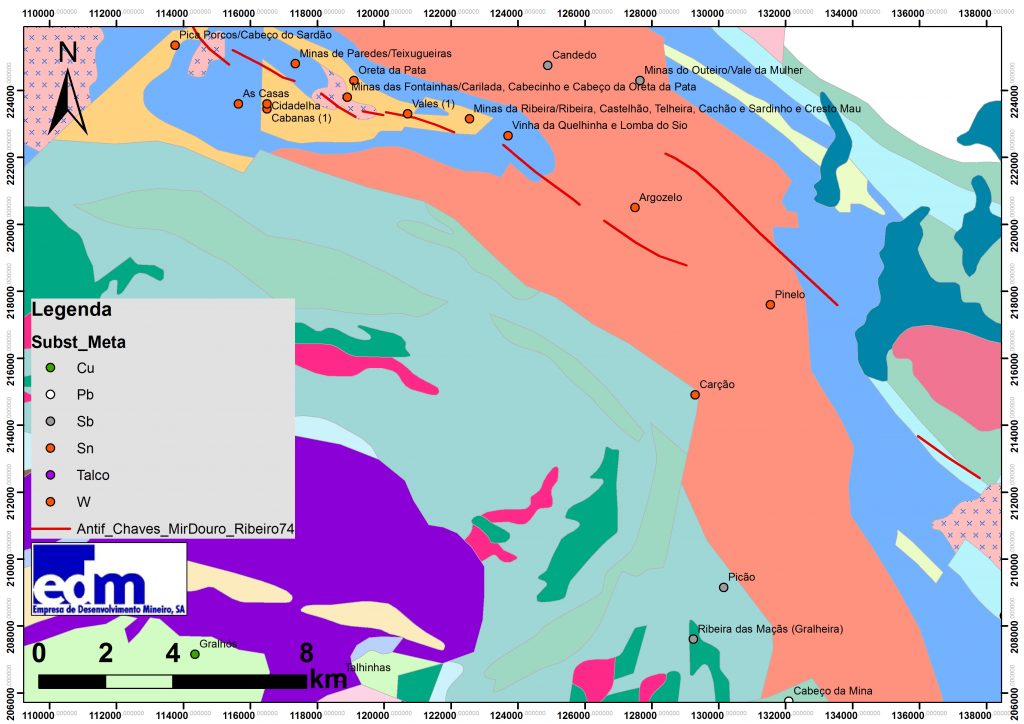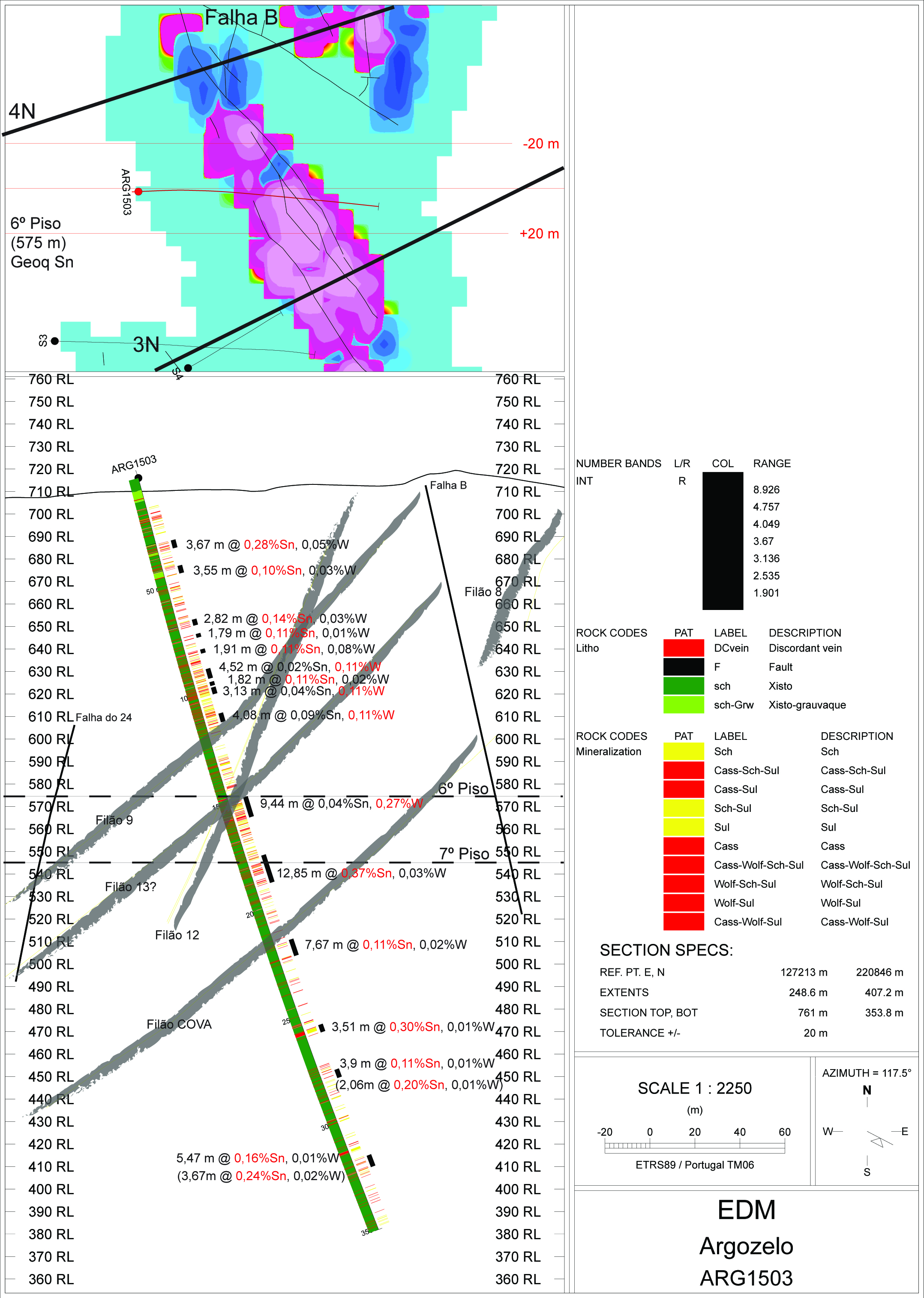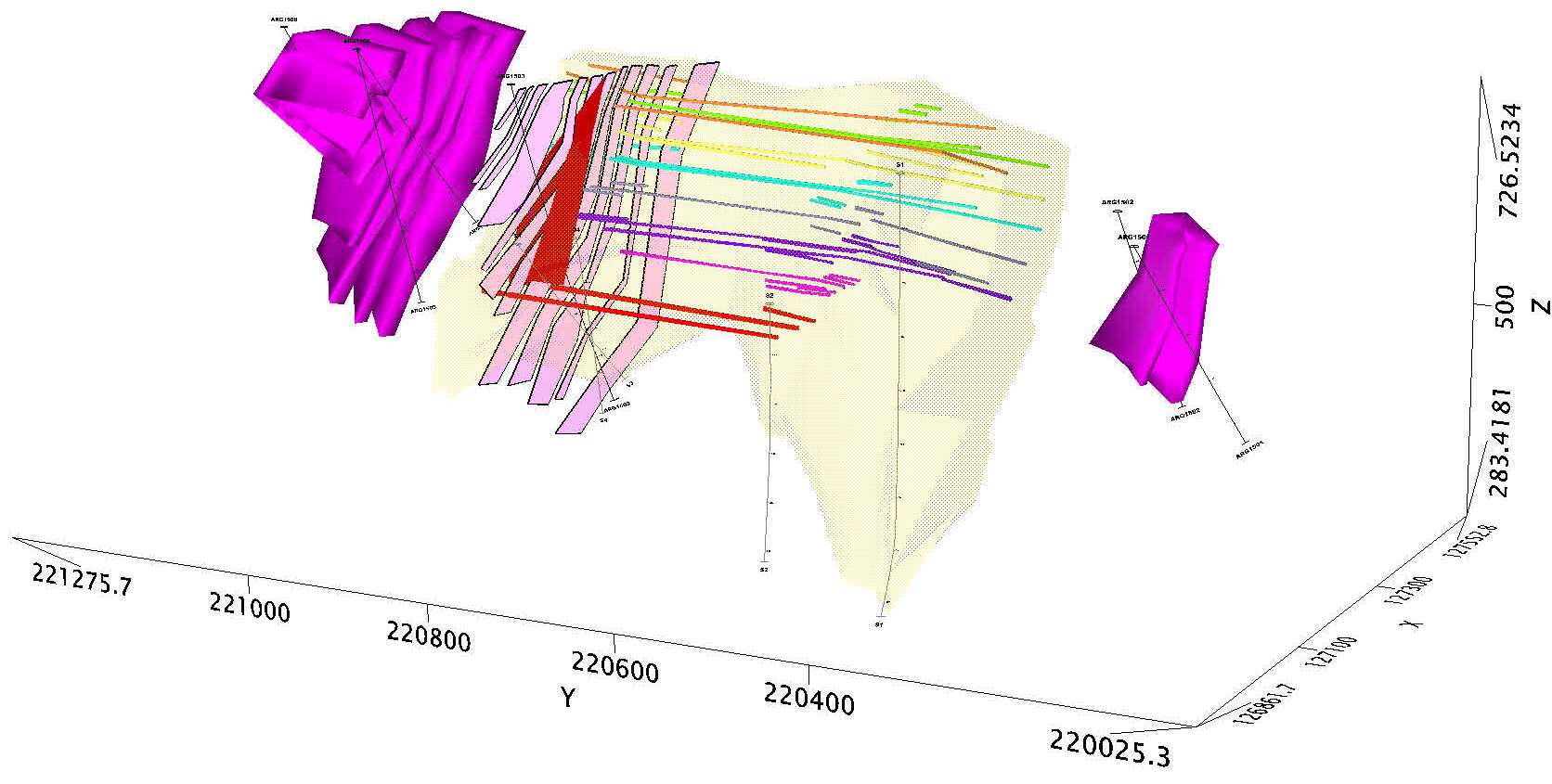The Argozelo area belongs to the Galiza Média Trás-os-Montes Zone (ZGMTM – Parautochthonous) at the southern edge of the Peritransmontano group, in the region of the Chaves – Miranda do Douro antiform. This sector includes rocks from the Silurian age belonging to the Upper Quartzite Formation (schist quartzite and quartz phyllites) and the Upper Schist Formation (siliceous and carbonaceous grey schists and siltstone), as well as from the Devonian age, represented by the Culminant Schists and Greywackes Formation (alternation of millimetric pelites and siltstones and quartz wacke). The entire sequence was affected by the Hercynian orogenesis through various stages of deformation, with the installation of syntectonic to late tectonic granitoid masses also occurring during this period.
The mineralization associated with this Argozelo sector essentially comprises quartz vein structures with sulphide mineralization and tin (Sn) and tungsten (W) association. Occurrences of gold (Au) are also found in this sector related to the late Variscan phases (ductile-brittle to brittle) and which developed systems of fractures in a principal NNE-SSW direction that control the installation sulphide quartz vein structures with the possible presence of gold. These alignments are parallel to the great Régua-Verín and Vilariça faults).
In the Argozelo area, several styles of mineralization are identified. These are distinguished by volume, age, type of mineralization, mineralization bearing structures and mineralization processes. Generally cassiterite, wolframite and scheelite occur in a complex network of sub-vertical quartz veins, but also in hydraulic breccias, disseminated in greisen, and, possibly, the occurrence of scheelite disseminated in calc-silicate zones associated with Silurian formations.





